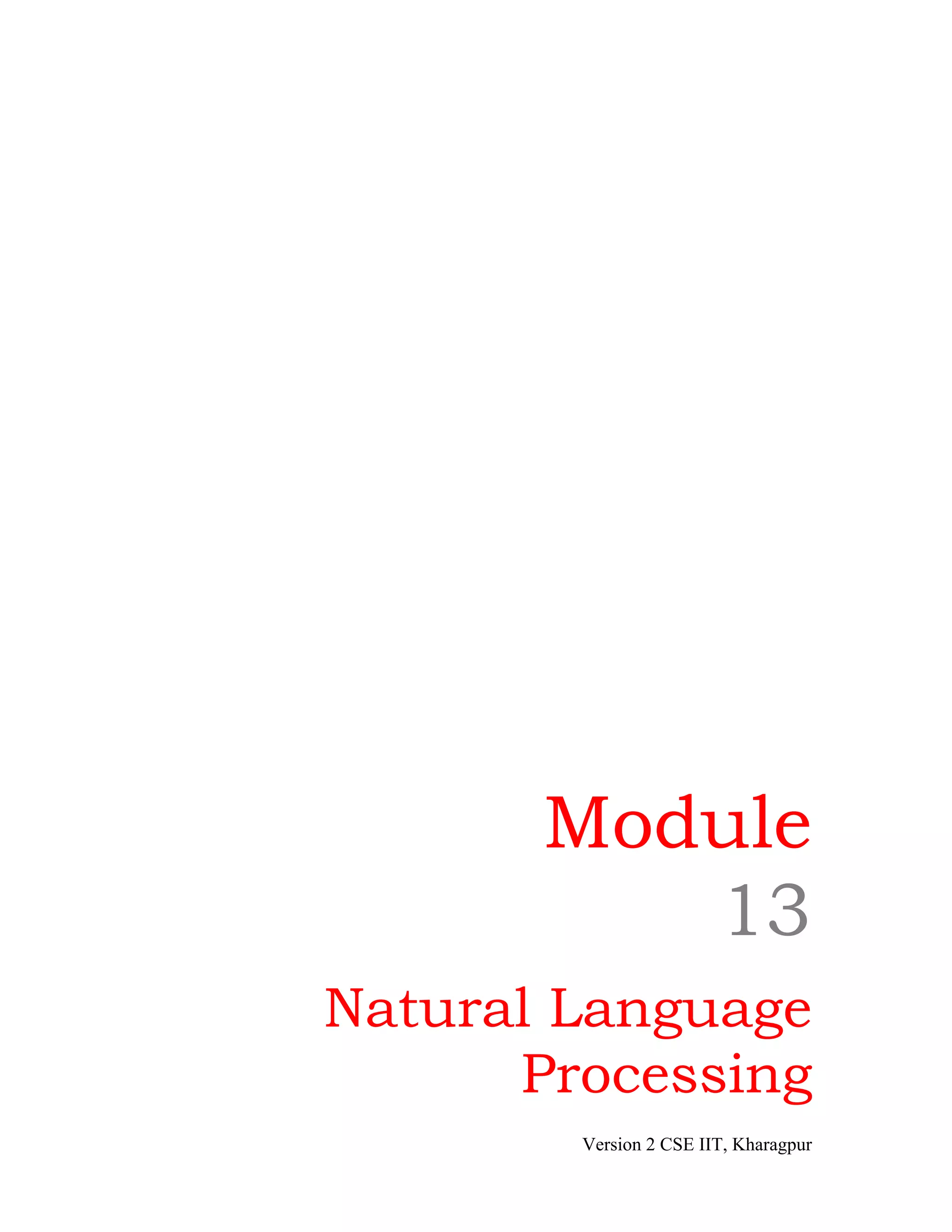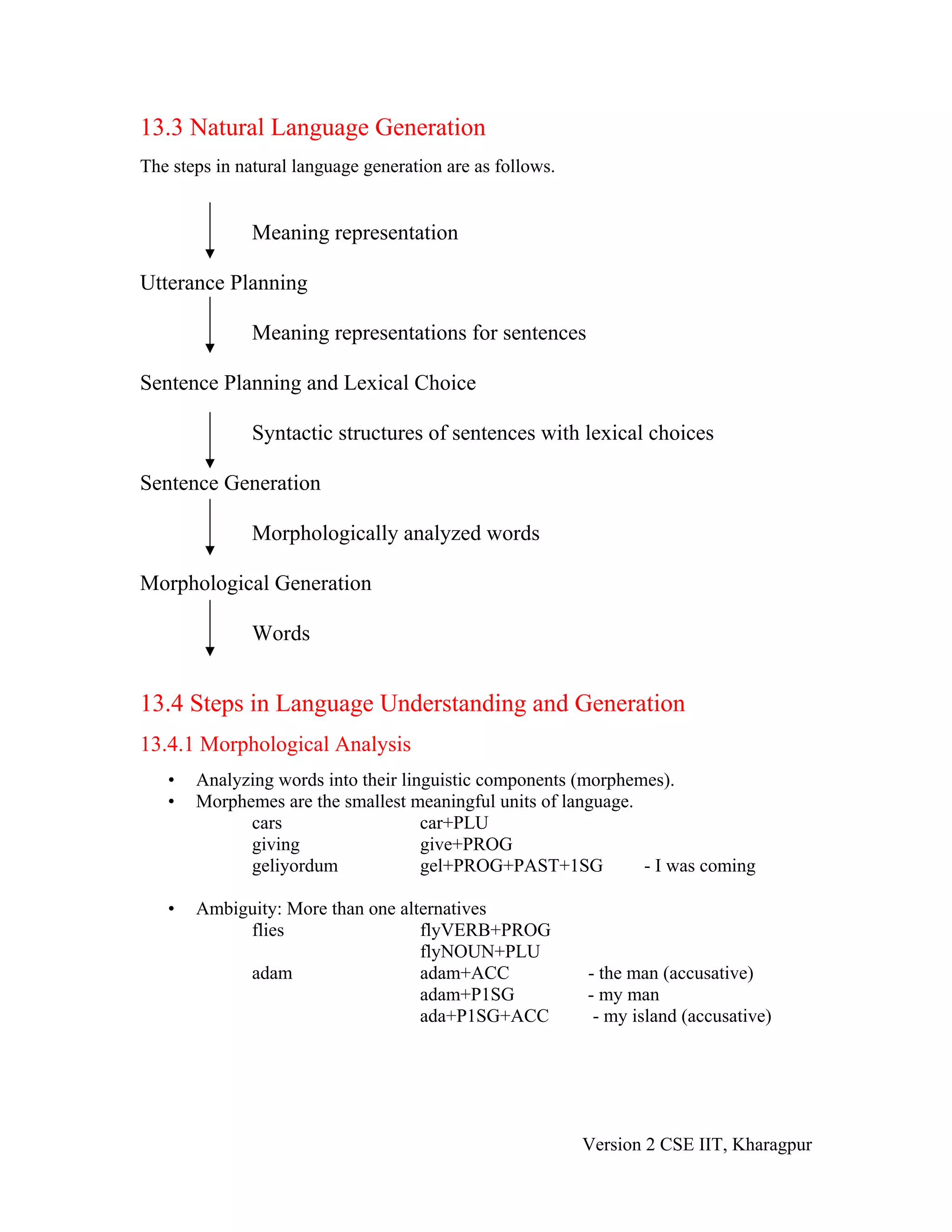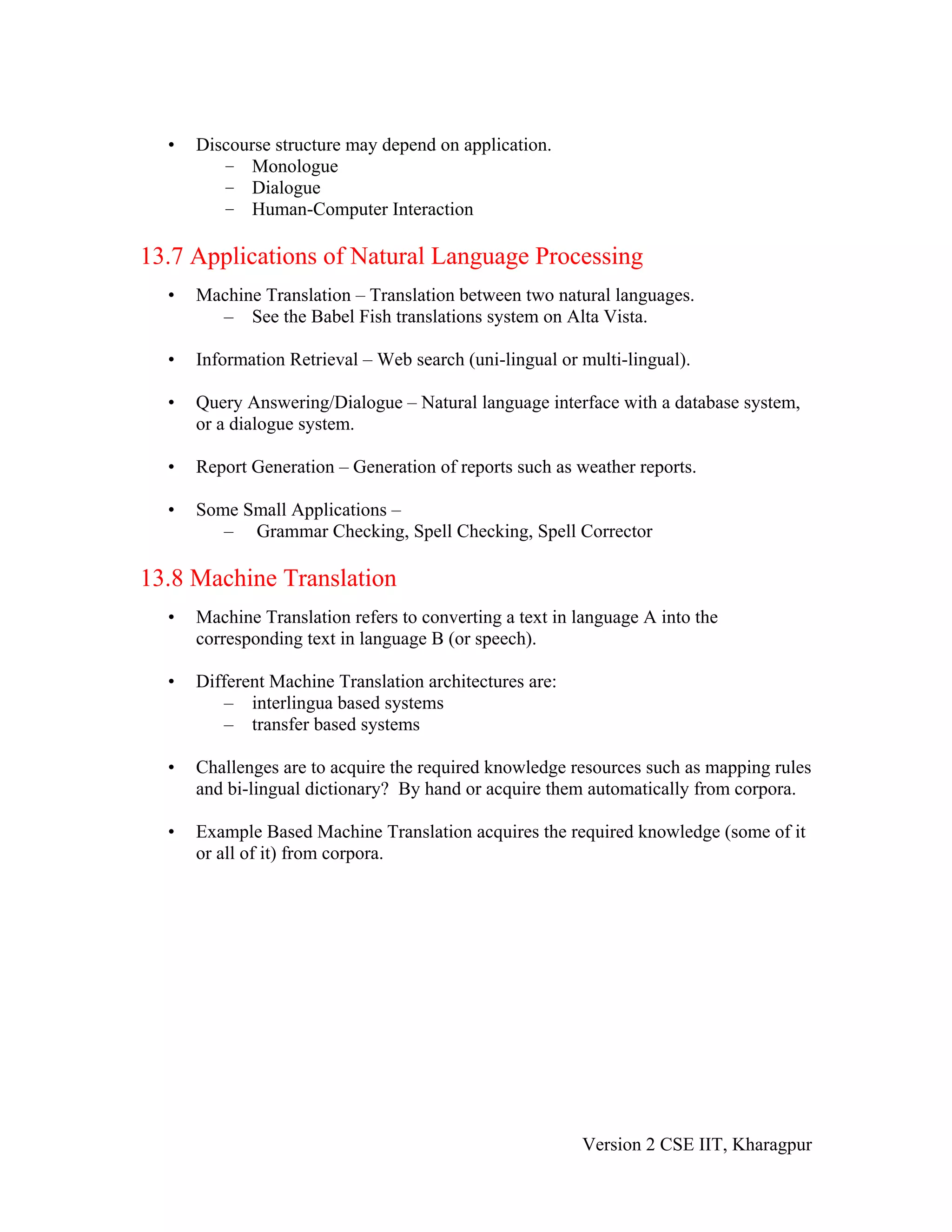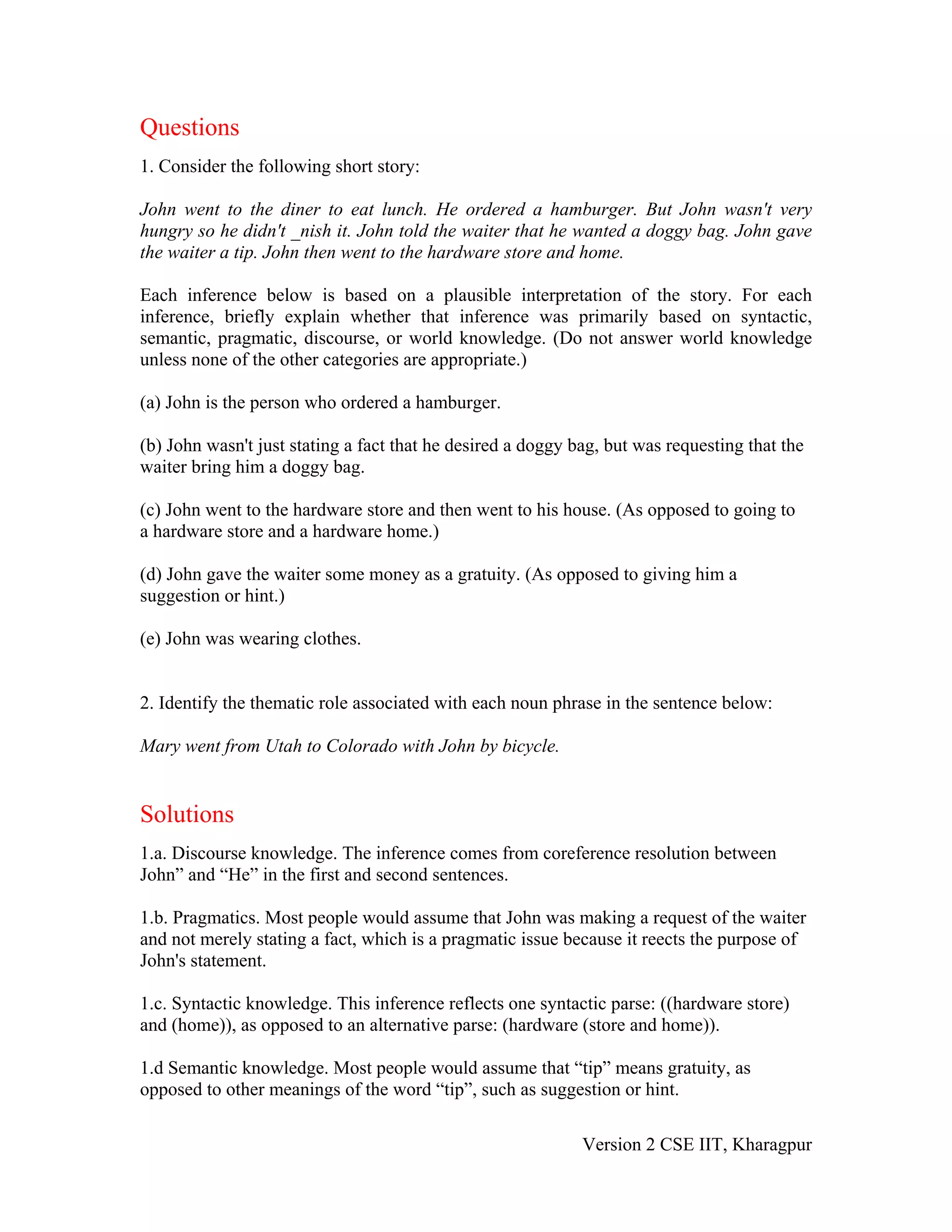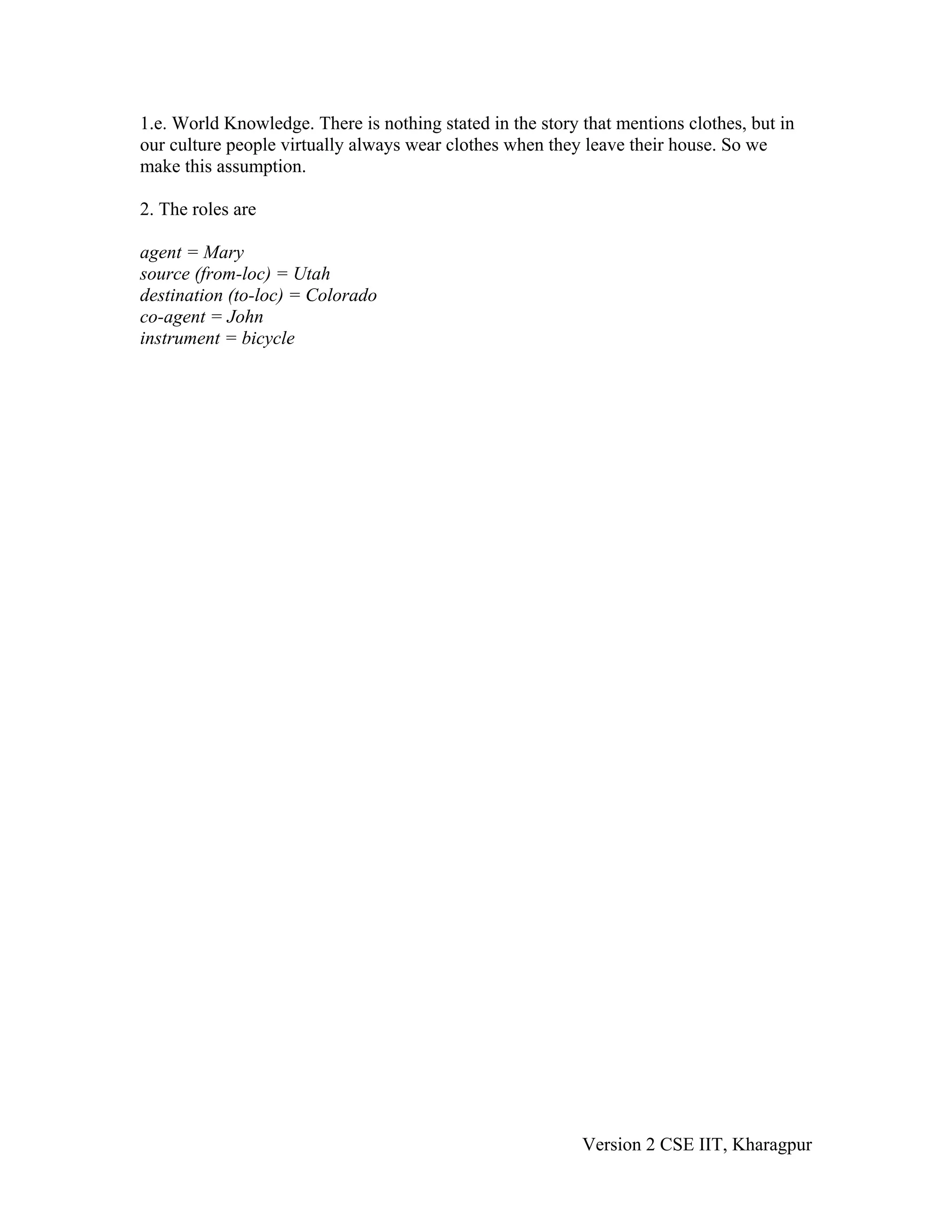The document describes the key steps in natural language processing including morphological analysis, part-of-speech tagging, lexical processing, syntactic processing, semantic analysis, knowledge representation, discourse analysis, and applications such as machine translation. It outlines techniques for analyzing words, assigning parts of speech, determining word meanings, parsing sentences into syntactic structures, assigning semantic meanings, representing knowledge, analyzing discourse, and translating between languages.
